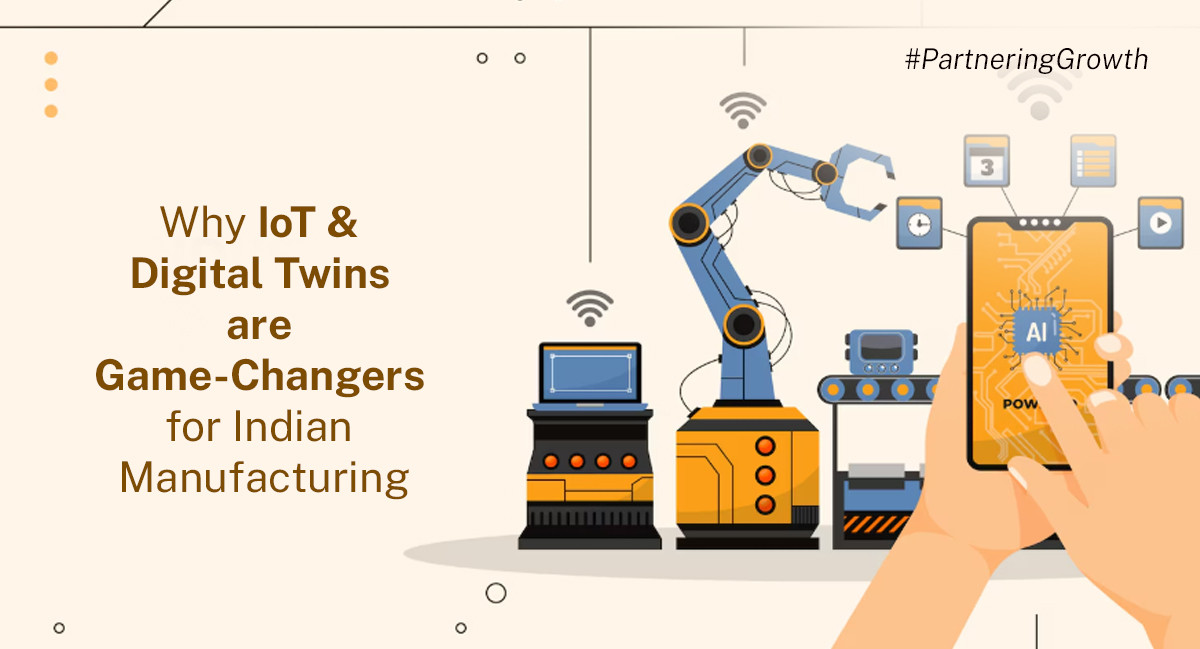


India’s capital goods sector is about to undergo a smart transformation thanks to Industry 4.0 technologies, specifically the Internet of Things (IoT) and digital twins. These innovations are helping manufacturers improve operational efficiency, cut costs, and increase competitiveness in the global market.
Real-Time Machine Efficiency with IoT
IoT allows manufacturers to continuously monitor and track machine performance in real time using embedded sensors and connected devices. This immediate data offers insights into equipment health, production flow, and energy use. Factories can then optimize uptime and reduce breakdowns. With clear visibility into machine efficiency, manufacturers can engage in predictive maintenance, resolve issues proactively, and allocate resources better. This leads to greater productivity and cost savings. A connected factory system is essential for moving from reactive to proactive manufacturing management (CII Industry 4.0 Adoption Report 2025).
Reducing Prototyping Costs with Digital Twins
Digital twins create virtual replicas of physical assets and processes. This enables manufacturers to simulate and rigorously test designs before moving to physical prototyping. Virtual prototyping can decrease costs by up to 30% by reducing the need for costly, time-intensive physical models. For capital goods manufacturers, this translates to faster design changes, fewer errors, and quicker time to market. Companies like Siemens and GE show how digital twins can optimize product development, foresee operational failures, and decrease downtime, delivering significant savings and improving innovation (Emerline, Capgemini, Siemens case studies).
Global OEMs Embracing Indian Smart Machinery
India is quickly moving from traditional machines to smart, connected systems. This transition is attracting global Original Equipment Manufacturers (OEMs) who are adopting Indian smart machinery for its cost advantages and the scalability and flexibility provided by Industry 4.0 technologies. Indian manufacturers are increasingly focusing on innovation, quality, and customization, shifting away from just volume production to advanced manufacturing capabilities that boost their competitiveness in exports (NASSCOM Future of Manufacturing 2025).
The Competitiveness Redefined
This change, driven by IoT and digital twins, is reshaping competitiveness in capital goods manufacturing. Instead of only producing machines, Indian manufacturers are now providing smart, efficient systems that integrate data analytics and automation. These technologies support flexible production, quick problem-solving, and ongoing performance optimization, which are increasingly sought after in the global market.
The SME Challenge: Can They Keep Pace?
While large manufacturers are quickly adopting these technologies, the question remains whether Indian SMEs can keep up. Issues like limited funding, awareness of technology, and a lack of skilled workers could hinder adoption. However, with supportive government initiatives, dedicated skill development, and accessible technology platforms, SMEs have a chance to overcome traditional hurdles and embrace the smart manufacturing movement. The success of IoT and digital twins in shaping India’s capital goods future depends on widespread adoption across all types of manufacturing (CII, NASSCOM).
Sources:
CII Industry 4.0 Adoption Report 2025
NASSCOM Future of Manufacturing 2025
Emerline Blog on Digital Twins
Siemens Story on Digital Twins in Industry